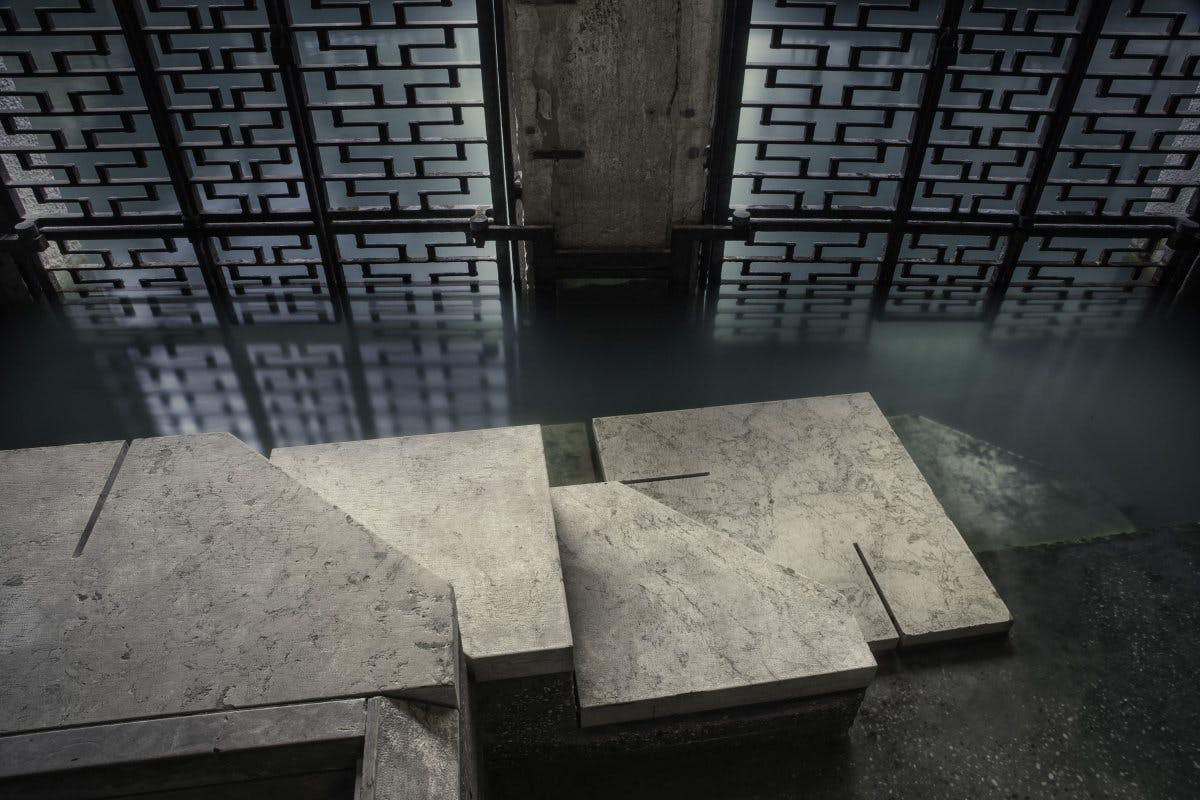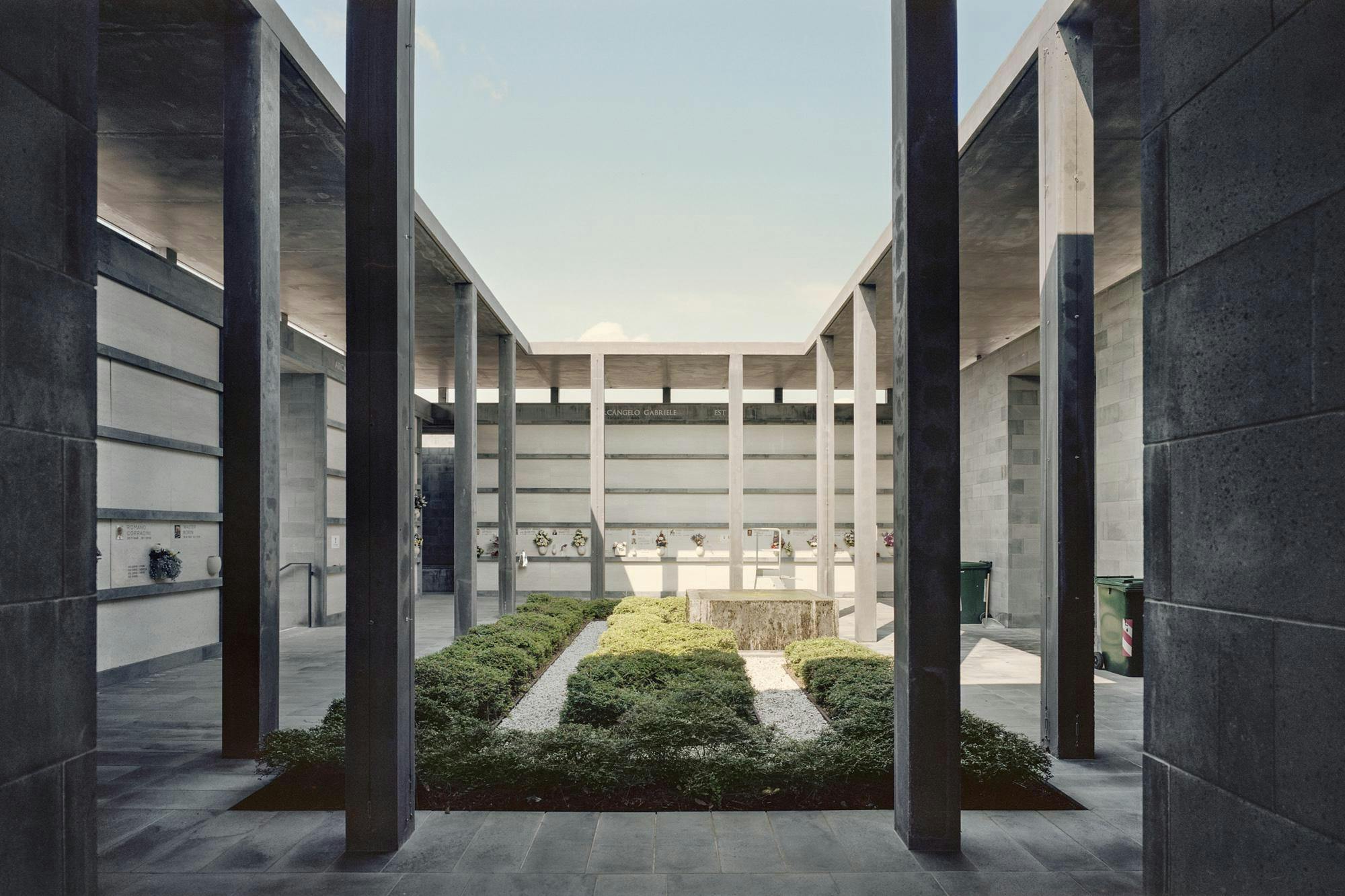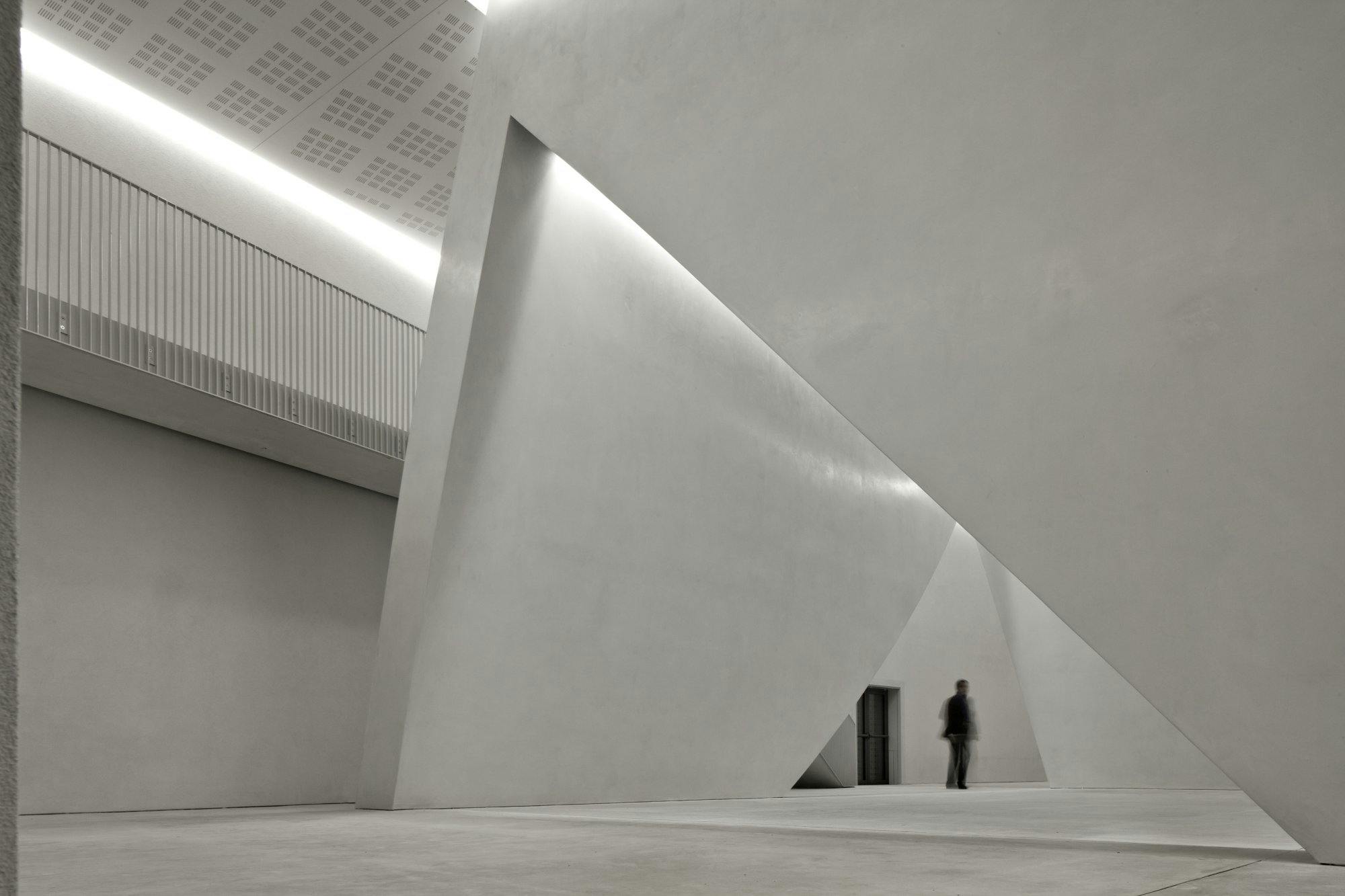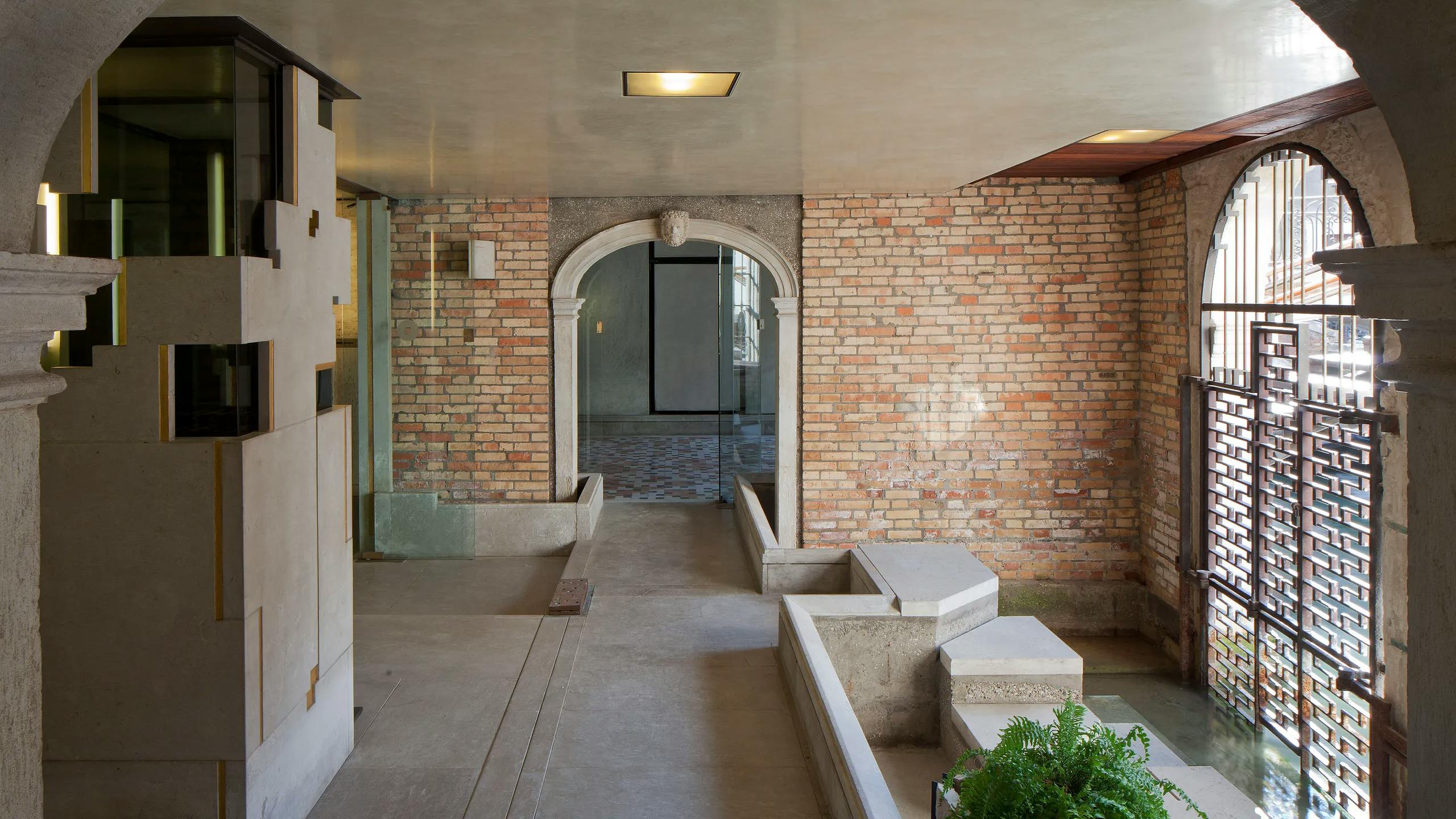
Fondazione Querini Stampalia
Fondazione Querini Stampalia in Venice is an 18th-century palazzo with a ground floor entrance, bridge, and garden redesigned by Carlo Scarpa between 1961 and 1963
Located in the Castello district, the Fondazione Querini Stampalia occupies an 18th-century palazzo adapted into a cultural foundation in the 19th century. Between 1961 and 1963, Carlo Scarpa was commissioned to reconfigure the ground floor, including the entrance sequence, internal bridge, and rear garden. The intervention—conceived as both flood mitigation and spatial recalibration—is one of Scarpa’s most studied projects, notable for its synthesis of Venetian material traditions with modernist precision.
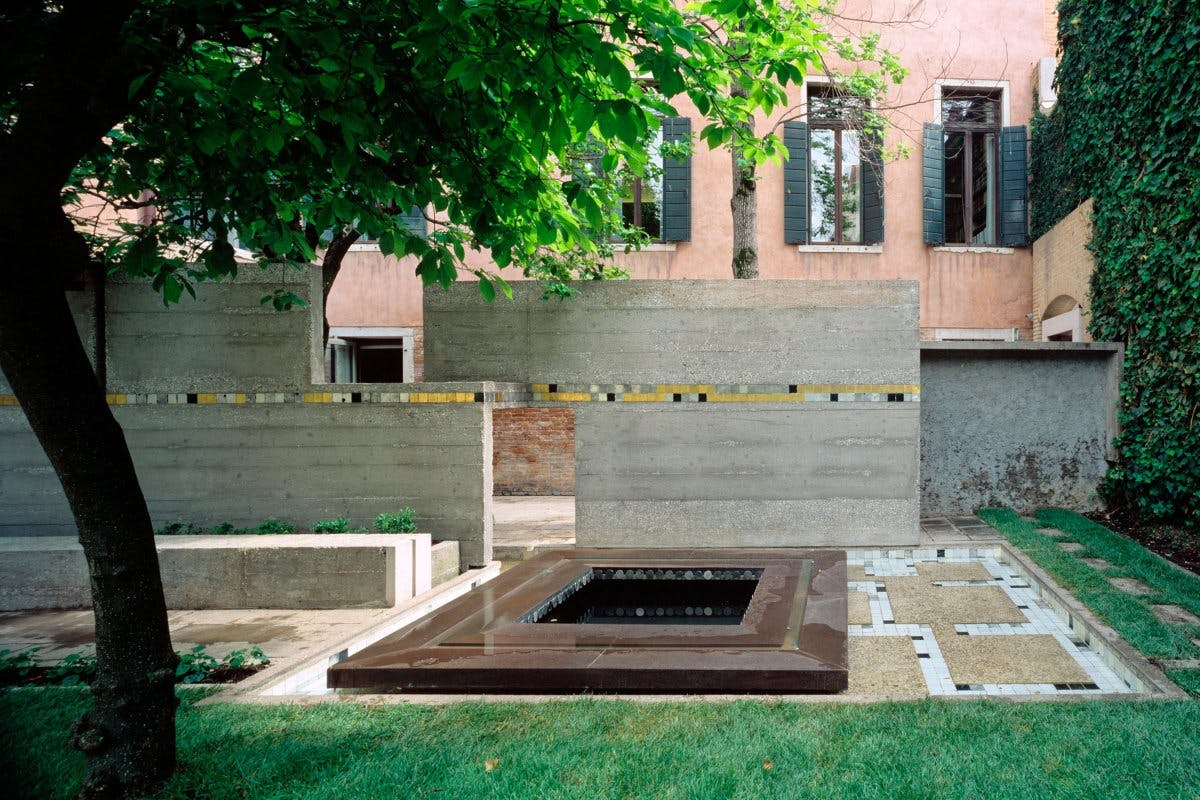
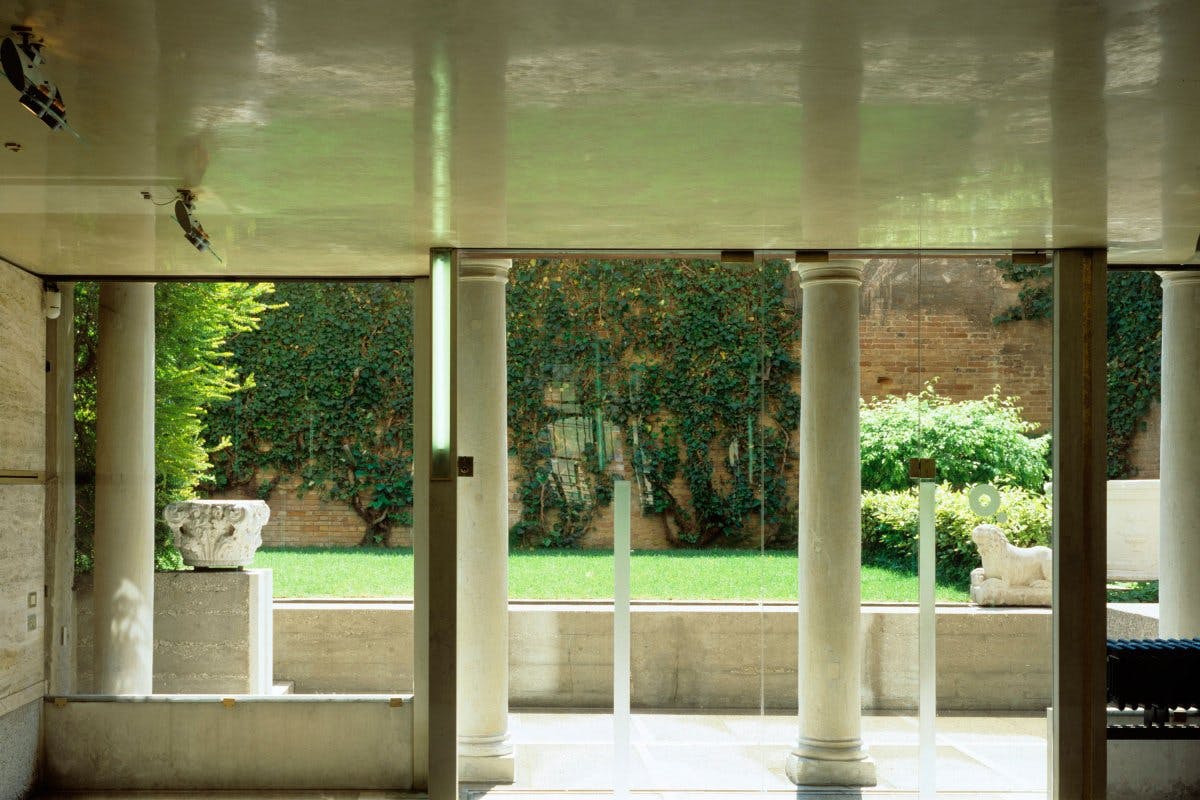
Scarpa’s work begins at the threshold. The original entrance, prone to frequent flooding from the canal-facing street, was not removed but reinterpreted. Scarpa designed a sequence of platforms, channels, and brass drains that allow water to enter and recede without damaging the structure—a hydraulic choreography that turns acqua alta into part of the experience. The floor system is composed of white Istrian stone and dark concrete, cut and joined in geometric rhythms that direct both water and movement. No element is decorative; every material performs.
Inside, Scarpa introduced a split-level bridge to connect the historic palazzo to a new exhibition space across the internal canal. The bridge avoids symmetry and instead works through offset alignments and visual tension, pulling the visitor through a tightly composed transition. Scarpa also designed custom metalwork, including gates and balustrades, where layering, perforation, and shadow control become compositional tools. The architectural language is neither restoration nor contrast—it is Scarpa’s own version of continuity.
At the rear of the site, Scarpa designed a walled garden, anchored by a concrete fountain that reads like an abstract ruin. Stone paths float above shallow water basins, and brick walls are punctuated by minimal apertures to frame views and mediate light. Though formally modest, the garden contains some of Scarpa’s most intricate detailing—including a stepped basin inscribed with the phrase quando le sere al placido, quoting Verdi’s Luisa Miller. As with most of his projects, the Querini intervention is not about invention but calibration: a slow, deliberate dialogue between materials, thresholds, and time.
